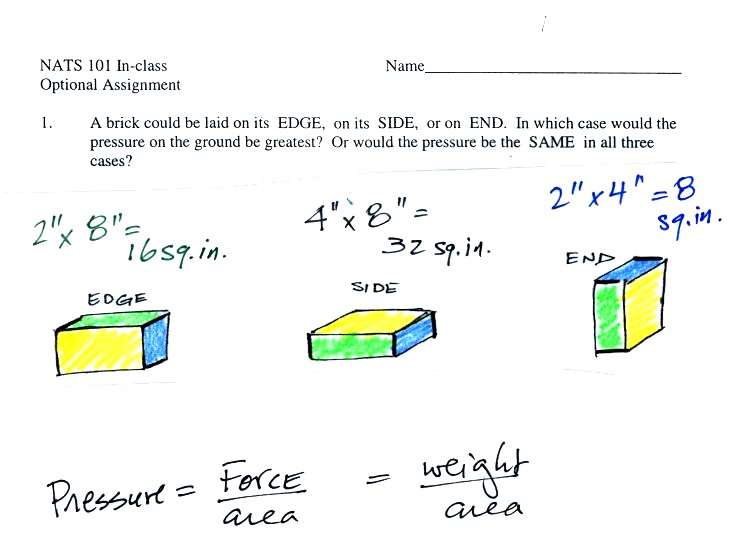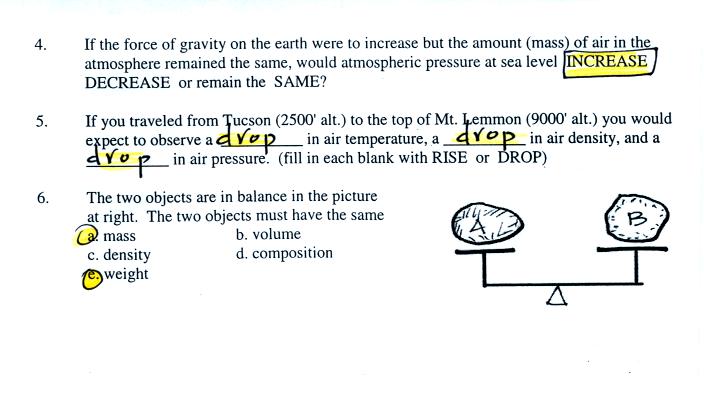Answers to In-class Optional
Assignment #1
You could earn up to 0.3 pts extra credit on this
assignment. If you don't see a grade marked on your paper you
earned full credit.

A brick weighs about 5 pounds. The greatest pressure will be
produced when the brick is sitting on its end, because the end has the
smallest surface area. The smallest pressure would be produced
when the brick is on its side. Here are the actual pressures for
each case:
edge: 5 lbs / 16 sq. in. = 0.31 psi
side: 5 lbs / 32 sq. in. = 0.16 psi
end: 5 lbs / 8 sq. in. = 0.62 psi

Normal sea level pressure is 14.7 psi = 1000 millibars = 1 bar = 30
inches of mercury. 14.7 psi is about 15 psi.
6 x 15 psi = 90 psi = 6 bars
This next problem caused problems for a lot of people.

In Question #4, atmospheric pressure is determined by the weight
of the air overhead. Weight, in turn, depends on mass and gravity
weight = mass x g
where g is a constant. In this problem, mass doesn't change
but gravity gets stronger. The atmosphere will weigh more and the
sea level pressure will increase.
Question #5
It is generally colder on top of Mt. Lemmon than in Tucson.
Temperature generally decreases with increasing altitude in the
troposphere (they may be thin inversion layers where temperature
increases with increasing altitude). The air on top of Mt. Lemmon
is also "thinner" than in the Tucson valley; air density decreases with
increasing altitude. Finally, pressure always decreases with
increasing altitude.
Question #6
The two objects must have the same weights for the scale to be in
balance. Then since weight is just mass x g and g is a constant,
the two objects must also have the same masses.




